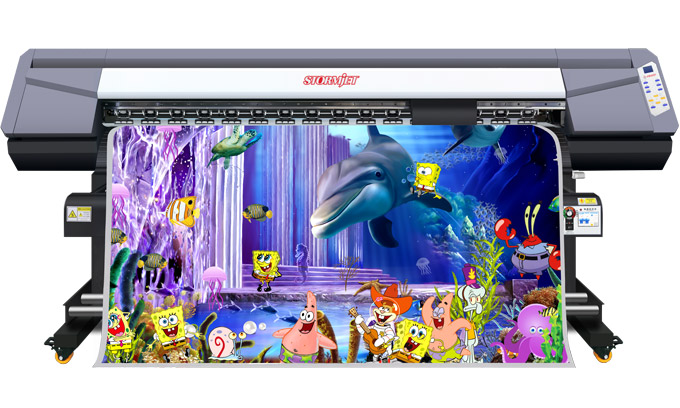Contact us
Stormjet eco solvent printer prevent static electricity
Zhengzhou New Century Digital Technology Co., Ltd.
As an objective natural phenomenon that can be seen everywhere in life, static electricity has been highly valued in industrial production. Many industries are seeking ways to reduce the losses caused by static electricity. Because electrostatic discharge will interfere with the normal operation of the circuit, slight electromagnetic pulse interference will cause the electronic products to run out of control, resulting in wrong instructions or loss of information. As a kind of precision printing machine, stormjet eco solvent printer is necessary to prevent static electricity.
Especially when the climate is dry, stormjet eco solvent printer will generate a lot of static electricity, which will directly cause damage to the electronic components such as print heads and circuits. So how do we prevent static electricity?
1.Ways to prevent static electricity
① Ground stormjet eco solvent printer. Connecting the ground wire to stormjet eco solvent printer can ensure that the current on the printing machine is led to the ground at the first time, avoiding damage to the components, and can also improve the drawing effect of Stormjet eco solvent printer.
②Use high-quality printing media. During the printing process, high-quality printing materials will reduce the generation of static electricity.
③Control room temperature and humidity. The most suitable working environment temperature of stormjet eco solvent printer is 15℃-30℃, and the humidity is 35%-65%. Keeping stormjet eco solvent printer in the best condition can reduce static electricity damage.
④Choose the appropriate printing speed. Studies have shown that after the speed is reduced, the electron cloud is in a stable state, the electrons will not dissociate, and the probability of static electricity is the lowest. It can be seen that the printing speed is not as high as possible.
2.How to ground the wire?
If conditions permit, the following operations can be performed on non-cement floors:
①Use 3 galvanized steel angles greater than 40*40mm (or φ32mm² round steel) to drive into the ground at a depth of not less than 2 meters, each with a spacing of not less than 1 meter, and then use galvanized flat steel (50mm*5mm) to secure these three weld them together and open a φ8mm hole at the end;
②The distance between the grounding body and the building is not less than 2 meters;
③Use insulated copper wire larger than φ6mm² as the lead, one end is fixed with the grounding body with M8 screws, and the other end is connected with the equipment grounding lead;
★If the user's power supply has a standard ground wire input port, connect the ground lead of the device to this port firmly.

contact us+-
